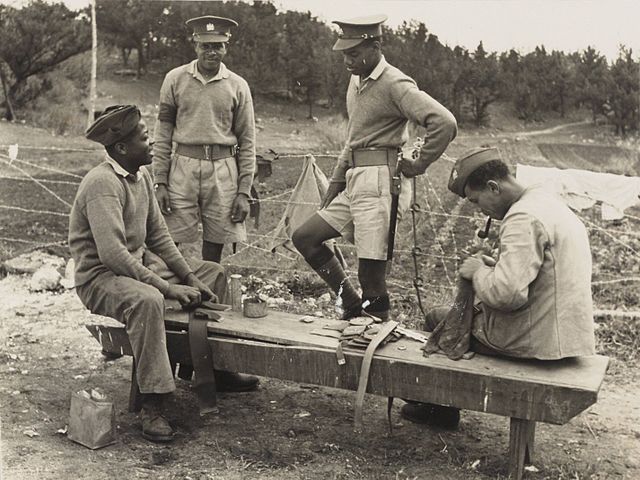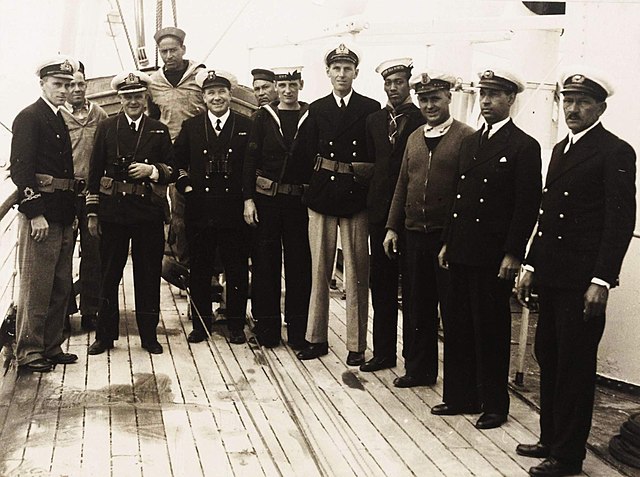The 1908 Pattern Web Infantry Equipment was an innovative type of webbing equipment adopted by the British Army before World War I.
A British soldier in France during the Battle of the Somme, 1916. Visible parts of his 1908 webbing in Battle Order are the haversack, which is being worn on the back in place of the valise, the entrenching tool carrier, the water bottle, and the ammunition pouches towards the front of his waist.
Soldiers of the Leicestershire Regiment in France in 1915, in Full Marching Order. The ammunition pouches can be clearly seen.
Soldiers from the Leicestershire Regiment in Full Marching Order. The valise or large pack is being worn and the haversack can be seen on the left side. The entrenching tool helve and bayonet scabbard can also be seen.
Bermuda Militia Infantry soldiers cleaning 1908 Pattern equipment during the Second World War
1937 Pattern Web Equipment
1937 Pattern Web Equipment was an item of military load-carrying equipment. It replaced the 1908 Pattern and 1925 Pattern—on which it was based—and was standard issue for British and Commonwealth troops from its introduction in 1937, throughout World War II, and in the post-war period until it was superseded by 1958 Pattern Web Equipment. It remained in limited use with Territorial Army and other second-line troops until the mid to late 1970s. Official use of the webbing in Community Cadet Forces and the Combined Cadet Force persisted into the 1980s.
Front and rear views of a soldier of the Royal Welch Fusiliers with 1937 Pattern Web Equipment, Normandy, August 1944
Two soldiers demonstrate 1937 Pattern Webbing, March 1944
British infantry on exercise in England, 1941
Crew of HMS Castle Harbour in the Second World War. Pistol-armed Royal Naval Examination Service personnel, wearing 1937 Pattern belts and holsters, boarded and examined ships before allowing entry to Bermuda's ports.








